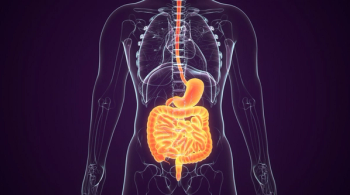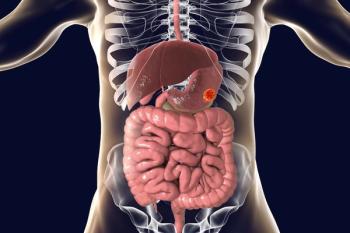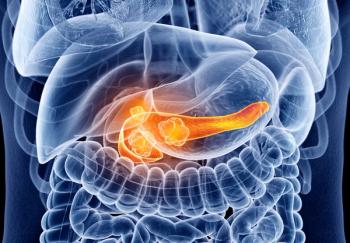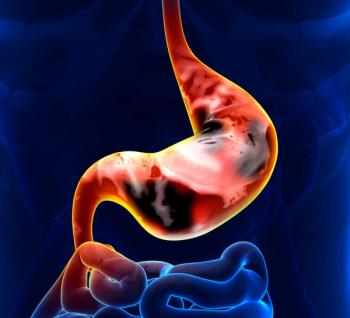
Oncology NEWS International
- Oncology NEWS International Vol 16 No 4
- Volume 16
- Issue 4
Hand-Assisted Laparoscopic Technique May Reduce Surgery Time in Colon Cancer: New Study Is Underway
In patients with colorectal cancer, a 'hand-in' approach to laparoscopic surgery—hand-assisted laparoscopic surgery (HALS)—may yield benefits beyond those of traditional laparoscopic techniques, particularly reduced operation time.
NEW YORKIn patients with colorectal cancer, a 'hand-in' approach to laparoscopic surgeryhand-assisted laparoscopic surgery (HALS)may yield benefits beyond those of traditional laparoscopic techniques, particularly reduced operation time. Patient recruitment to a study assessing HALS vs standard laparoscopic surgery has begun at several sites in New York City.
In a HALS procedure, the surgeon inserts his or her nondominant hand through the hand-assist device and into the intra-abdominal cavity via an incision between 3 and 5 inches in length, and can operate on the patient in conjunction with standard laparoscopic devices held in the dominant hand.
More Rapid Recovery
Similar to advantages of standard laparoscopy over open surgery, HALS has typically been associated with shorter hospital stays, reduced pain, and more rapid recovery, owing in part to the smaller incision required. HALS also has been reported to improve surgical outcome because the intra-abdominal hand provides the surgeon with tactile sensation and 3D spatial orientation, and permits effective and rapid hemostasis. Reports in the literature also suggest the technique can be learned more quickly than standard laparoscopy, with better reproducibility.
GelPort: Newer HALS Device
The second-generation HALS device that will be studied is GelPort (see Figure), made from a soft, gel-like material that maintains an airtight seal around the surgeon's hand while the sleeve and ring apparatus "creates a kind of doorway to the patient's abdomen," explained investigator Jeffrey W. Milsom, MD, DeCosse Distinguished Professor of Surgery and chief of Colon and Rectal Surgery, Weill Medical College of Cornell University.
The GelPort device is inserted through a small pubic-area incision, with the patient under general anesthesia, Dr. Milsom told ONI.
Manufactured by Applied Medical Resources Corporation, of Rancho Santa Margarita, California, the GelPort system consists of a rubber sleeve (wound protector) that passes through the abdominal wall and is attached at one end to a plastic ring, which rests on the outer surface of the patient's skin. An outer gel dome with a central opening is fitted onto the plastic ring, completing the seal.
The surgeon's hand can be passed into and out of the gel without affecting the carbon dioxide seal, or pneumoperitoneum, used to inflate the abdominal cavity for surgery, "giving the surgeon more room during the laparoscopic portion of the procedure," Dr. Milsom said.
Although it is possible to introduce small hand-held instruments through the gel, generally, Dr. Milsom noted, the surgeon inserts other laparoscopic instruments through one or two additional small incisions, "to move the section of affected colon outside the abdomen through the GelPort devicehere it becomes a sort of open surgeryand cut away the affected area."
Commenting on the upcoming study, investigator Richard L.Whelan, MD, chief of the Section of Colon and Rectal Surgery, New York-Presbyterian/Columbia University Medical Center, said, "hand-assisted surgery gives surgeons a sense of touch which helps identify the affected area of the colon and helps to better control any bleeding. Also, because the colon is resected outside the abdomen, a sometimes difficult and laborious laparoscopic resection is not necessary. Our study may show that these advantages help cut down on the time of the surgery."
Articles in this issue
over 18 years ago
Curcumin Evaluated for the Treatment of Pancreatic Cancerover 18 years ago
Tykerb Approved for Metastatic HER2+ Breast Cancerover 18 years ago
Drug for BPH May Also Reduce the Risk of Prostate Cancerover 18 years ago
Phase III Trial of Prostvac-VF Is Launchedover 18 years ago
Electronic System Reminds Patients to Schedule Examsover 18 years ago
Phase II Trial of Panzem for Renal Cell Carcinoma Initiatedover 18 years ago
Chemotherapy May Enrich Tumorigenic Cells in Breast Caover 18 years ago
Watchful Waiting Management for Prostate Ca a Hard Sellover 18 years ago
Once-Weekly SC Idraparinux Equals Standard DVT RxNewsletter
Stay up to date on recent advances in the multidisciplinary approach to cancer.
































































































